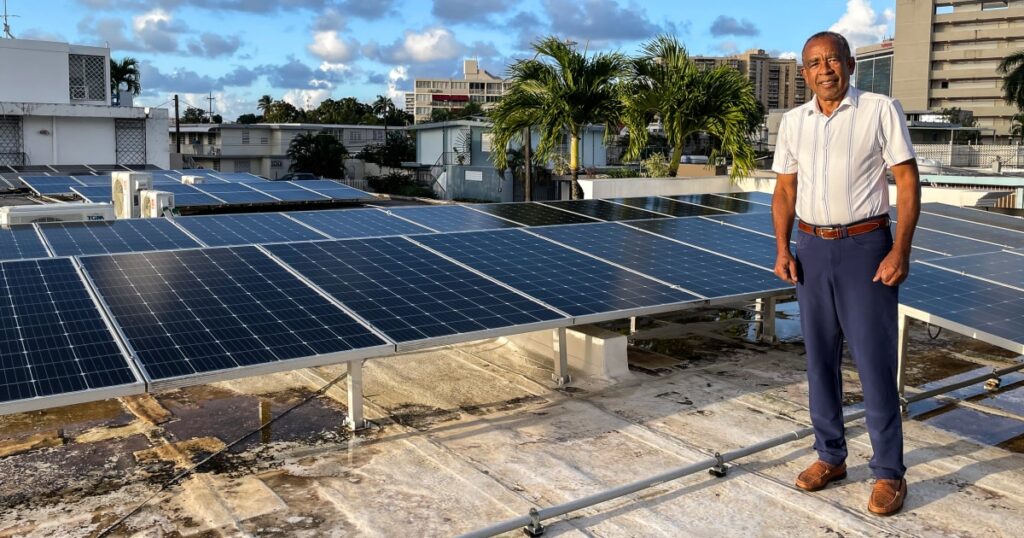TRUJILLO ALTO, Puerto Rico — There’s no need for natural disasters or bad weather for Marta Rojas to lose access to electricity on any given day.
“We have to become fortune tellers to be able to cook or to do laundry before the power goes out,” Rojas, 73, said in Spanish.
Rojas said many of her neighbors who have disabilities and need oxygen tanks to breathe have to rely on generators to power through unexpected outages, incurring expenses that many struggle to afford.
The generators’ rumbling noise and strong gasoline smell are such constants they seem at times to take over Puerto Rico — even when adverse weather events aren’t present.
Rojas, of Trujillo Alto, said she remembers a Puerto Rico where power outages were uncommon. But that changed when Hurricane Maria devastated the island’s ailing and disinvested power grid in 2017, triggering the longest and biggest blackout in U.S. history.
Most of the roughly 3,000 people who died in Maria’s aftermath died because of lack of electricity and the ensuing interruptions in medical and other services.
The grid hasn’t yet been permanently rebuilt, so the patched-up grid still acts up, causing blackouts and brownouts when people least expect it.
“This is a matter of life or death, especially after Maria,” said Ruth Santiago, a community and environmental attorney based in the southern town of Salinas.
Meanwhile, Rojas and other power customers in Puerto Rico have been subjected to seven electric rate increases over the last year, even though people in Puerto Rico already pay about twice as much as mainland U.S. customers.
A combination of such factors has prompted a growing number of Puerto Ricans to make the transition to renewable energy in the hope of finally having reliable power.
But currently, less than 4% of power generation comes from renewable energy. Puerto Rico is in a race to comply with local policies that 40% of electricity must come from renewable energy sources by 2025, with the…
Read the full article here





